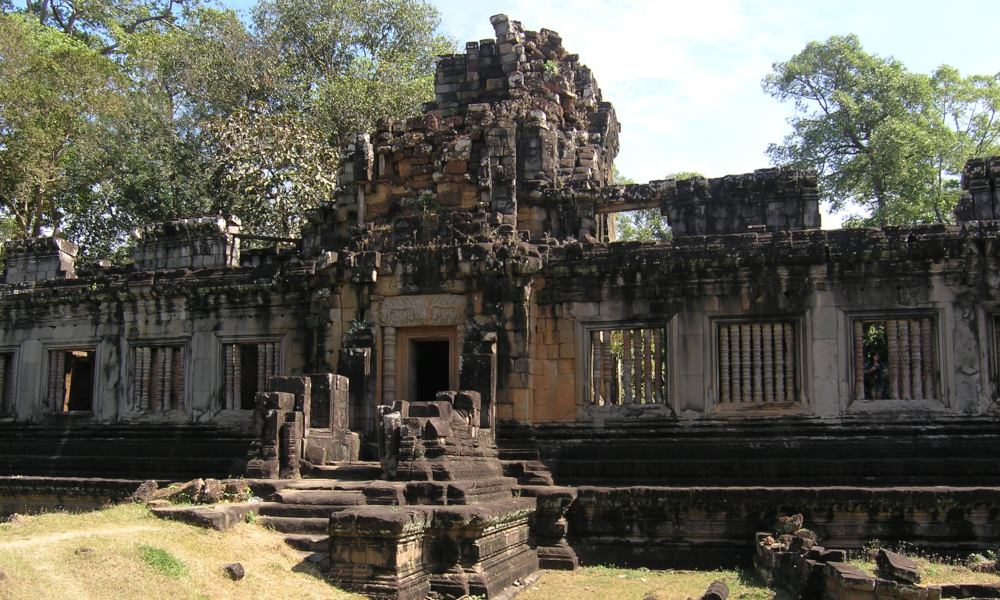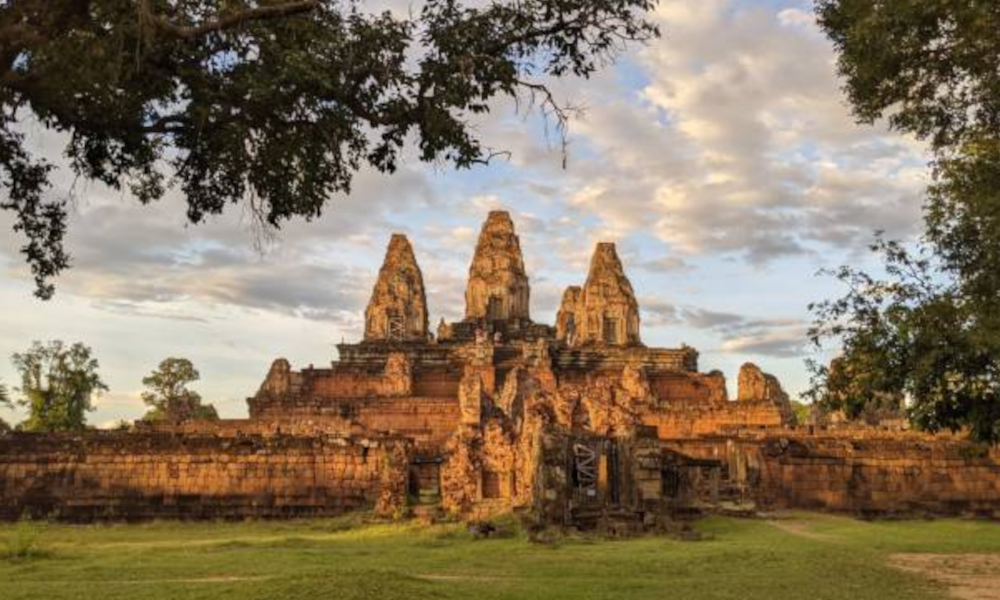khleangs Temple

Rectangular sandstone structures are situated opposite the Terrace of Elephants, located behind the Prasat Suor Prat. The term ‘Kleang’ translates to ‘storeroom’; however, it is improbable that this was their primary purpose. An inscription of a royal oath of allegiance etched into the doorway suggests that these buildings may have functioned as reception areas or accommodations for visiting dignitaries and ambassadors.
Table of Contents
ToggleThe North Khleang was originally constructed in wood during the reign of Rajendravarman II and subsequently reconstructed in stone by Jayavarman V, likely before the establishment of the South Kleang. It features the most well-preserved carvings among the structures. Conversely, the South Kleang remains unfinished. While the Kleangs may appear unremarkable upon closer examination, they present a picturesque view from a distance, nestled among the Prasat Suor Prat, and are best captured in photographs during the afternoon.
The Angkor Wat Grand Circuit Tour does not include a visit to Angkor Wat itself. Instead, the itinerary focuses on the temples located to the...
Layout and Design
Both structures are rectangular in shape and constructed from sandstone. They exhibit slight variations in their design, with the South Khleang being somewhat narrower than its northern counterpart.
An inscription of a royal oath of allegiance is etched into the doorway, suggesting that it may have served as an entrance for visitors. The term “Khleang” translates to storeroom; however, it is improbable that these buildings were utilized for such a function.
The North Khleang features the most well-preserved carvings, yet both structures appear rather unremarkable when examined up close. They are best appreciated from a distance, where their overall grandeur becomes more evident. The South Khleang remains unfinished.
History of Khleangs
The two temples were constructed during the late 10th and early 11th centuries under the reigns of Kings Jayavarman V and Suryavarman I. They were not contemporaneously erected; the North Khleang was completed several years prior to the South Khleang.
Initially, the North Khleang was built in wood by King Rajendravarman II, but it was later reconstructed in stone by Jayavarman V, resulting in the structure that exists today. The original purpose of these edifices remains uncertain, although it is believed they served as accommodations for visiting nobility.
Limited information is available regarding the history of these temples, but it is generally accepted that, similar to other temples in the vicinity, they were ultimately abandoned at some point during the 16th century.
Should Visit or Not
Both structures appear rather ordinary in comparison to the nearby temples. Nevertheless, the location serves as an excellent spot for a respite, with numerous options available for purchasing food in the vicinity. It presents a suitable opportunity to pause for lunch.
The Khleangs, when observed from afar, possess an appealing aesthetic, making it worthwhile to take a brief stop for capturing landscape photographs of the surrounding scenery.
Location & How to Get There
The Khleangs are situated approximately 500 meters to the north of Bayon Temple. The South Khleang is located merely a few meters from Prasat Suor Prat, while the North Khleang is encircled by the Terrace of the Elephants, the Terrace of the Leper King, and Preah Pithu.
Both structures are readily accessible and near Siem Reap town. The surrounding area offers ample space for visitors. Various modes of transportation are available, ranging from bicycles to large tourist buses. To access the site, visitors can park near the terraces and walk a short distance of about a hundred meters to reach both Khleangs.

